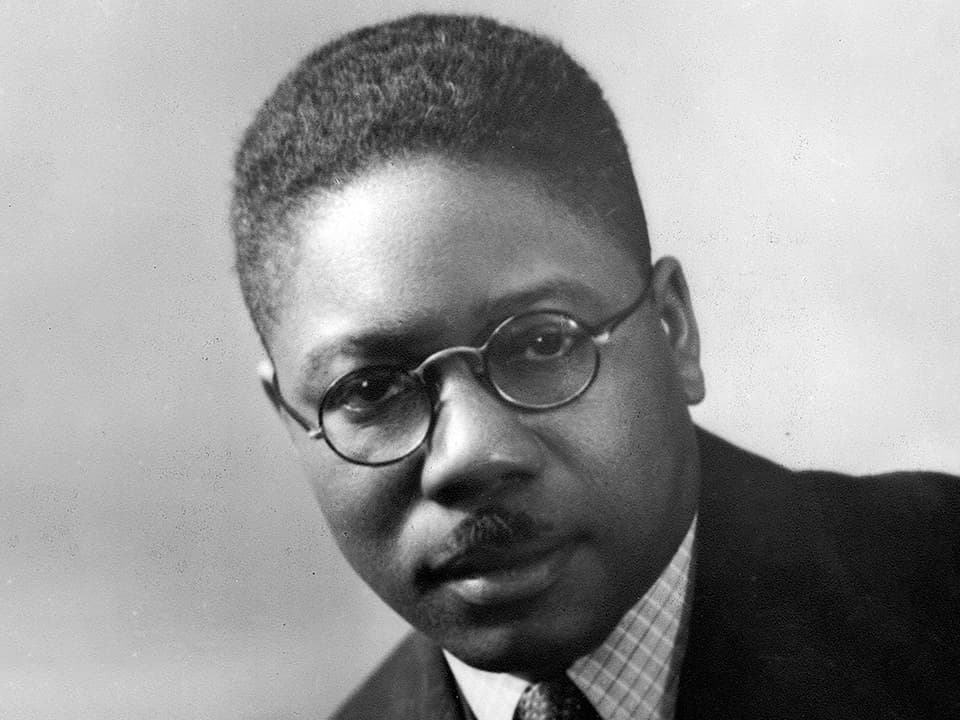Aaron Douglas

A century ago, a newly-assertive Black culture had established itself on the island of Manhattan. The Harlem Renaissance, as it would be known, was overflowing with the cultural contributions of luminaries such as Zora Neale Hurston, Duke Ellington and Langston Hughes. But it lacked a visual identity until Aaron Douglas, a few years after earning his Bachelor of Fine Arts degree from Nebraska in 1922, stepped off the train in New York.
Just 26 at the time, he was almost immediately in the company of the intellectual activist W.E.B. Du Bois and working on cover illustrations for the NAACP’s The Crisis and the National Urban League’s Opportunity magazine. Several months after his arrival, correspondence with Langston Hughes places him at the very center of the Harlem creative scene. His stature would continue to grow; over time, he would become known as “the father of African American art.” Douglas’s artistic style from the era crackled with modernism, combining the angular tensions of cubism and the organic forms of art deco with a distinctly Afrocentric point of view.
His massive murals today adorn the walls of major public buildings, and his contributions in graphic design and illustration, particularly to James Weldon Johnson’s seminal “God’s Trombones: Seven Negro Sermons in Verse,” and the periodicals The Crisis, Fire!!, and Opportunity remain as records of a truly singular artist and intellect; their power and resonance was strong enough to earn Douglas a posthumous honor as an AIGA (American Institute of Graphic Arts) medalist in 2018.
Douglas went on to found the art department at Fisk University in Nashville, which he led from 1939 to 1966; he had previously been commissioned to create the murals at that institution’s library.
The majority of extant Douglas works are held in major galleries — in particular, in the National Gallery of Art in Washington, DC — and in situ as murals — most notably at Fisk and at the Schomburg Center for Research in Black Culture in Manhattan, where his four-panel masterpiece “Aspects of Negro Life” can be seen. Here at Nebraska, where his art education began, the Sheldon Art Museum holds four Afrocubist woodcuts from his first year in Harlem, and a painting, “Window Cleaning,” in a later, more traditional style, in its collections.